A Busy Couple of Weeks in December
There have been a number of significant and/or interesting developments in the nuclear energy field recently, with large light-water reactor business taking the fore. Here are some highlights:

A message from NV5, Inc.
Seconds Matter: Rethinking Nuclear Facility Security for the Modern Threat Landscape
There have been a number of significant and/or interesting developments in the nuclear energy field recently, with large light-water reactor business taking the fore. Here are some highlights:
"Some recent work by E. Fermi and L. Szilard, which has been communicated to me in manuscript, leads me to expect that the element Uranium may be turned into a new and important source of energy in the immediate future." - Albert Einstein, letter to President Franklin D. Roosevelt, August 2, 1939
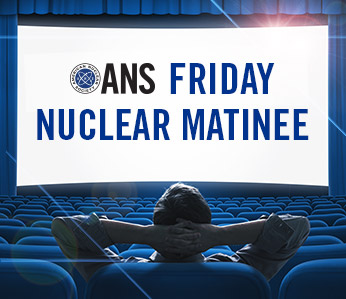
When you hear the friendly voice of Joe Washington, you know that it's time for another in the excellent series of "Vogtle Timeline" videos presented by Georgia Power. This most recent update covers some important ground - namely, the change in construction arrangements following Westinghouse's bankruptcy and how the project goes on from that point. Not only is physical progress at the plant site displayed, but community outreach and impact are also shown in this well produced video.
"There's no one I'd rather go into battle with," said ANS President Bob Coward to a packed Opening Plenary audience this morning, "than nuclear professionals," in reference to the stated purpose of ANS in advancing nuclear technologies. Coward's very first remarks set the tone for a speech that was remarkably hopeful and bright given the recent blows that nuclear energy has suffered here in the United States.
(Part of a special series of videos filmed at the 2017 ANS Annual Meeting. By Will Davis.)
By Jim Walther, Executive Director of the National Museum of Nuclear Science & History; Chair of the Nuclear Science Week International Steering Committee
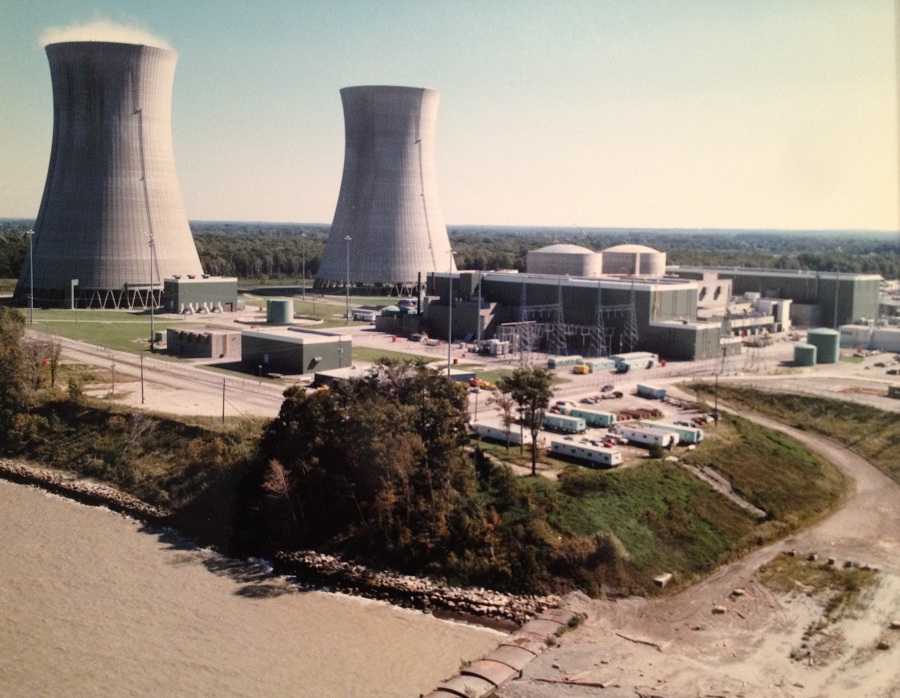
Perry Nuclear Plant in Ohio. Nuclear plants create no emissions of their own; the cooling towers emit only water vapor. Press photo in Will Davis collection.
One of the things that's important to consider this week - National Clean Energy Week - is whether or not energy sources we depend upon are actually clean. While we think of solar and wind energy as being pretty clean, we are also reminded that they are not reliable, and they do experience periods of time when they just don't work. What we use to fill in that power gap is from sources we can control, independent of weather or time of day. These are sources we call "dispatchable" generating sources, because we can dispatch them and expect they'll answer the call to provide power.
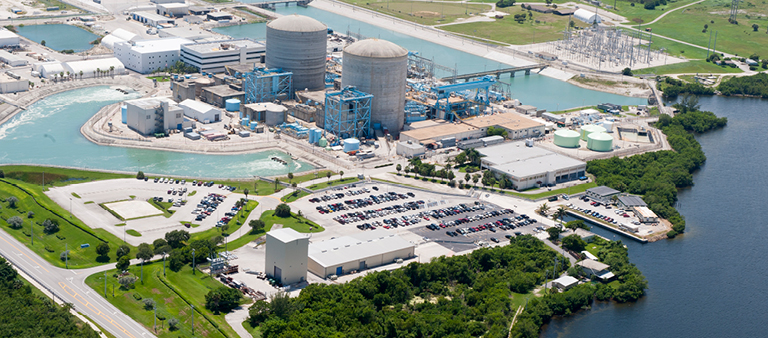
Florida Power and Light's St. Lucie nuclear plant; photo courtesy FPL
Hurricane Irma shocked the country this week with images of wind and water that haven't been seen in some time along the hurricane-wary coastlines of the United States. Although people in those regions always have preparation for these storms somewhere in their minds, the two Florida Power & Light (FPL) nuclear plants-both of which powered through the hurricane-had both a background of design and preparedness to stand on as well as some recent, last-minute preparations.
In a world fraught with loud, anti-nuclear voices, including a recent satirical news show that had a bit on nuclear waste, I've been pondering ideas that would provide a media platform to help counter the attacks on nuclear. While I am still a penniless grad student who lacks the budget of a weekly HBO nightly show, I believe I may have found a compromise. Starting today, Friday, September 1, 2017, I will be launching the bi-weekly podcast RadioNuclear.
(This is a breaking news story. This post will be updated as information is available; scroll down for the latest updates and additions.)
(Third in a series of videos recorded at the ANS Annual Meeting, June 2017 in San Francisco)
In June, Bob Coward became the 63rd president of the American Nuclear Society. Watch this short introduction video where Bob talks about his career, his thoughts on the future of nuclear, and how it fits into the needs of the world.
Editors note: Today's video is second in a special series filmed in June at the American Nuclear Society's Annual Meeting held in San Francisco, Calif. this past June.
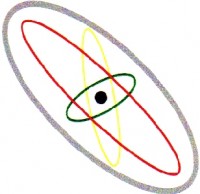 The last half of the 1950s was a time of great promise for the concept of atomic-powered commercial ships. The idea was given real political momentum (which it very much needed) in 1955 when President Eisenhower formally proposed construction of such a ship by the United States. In July 1956, Congress passed Public Law 848, authorizing the actual engineering and construction of the ship.
The last half of the 1950s was a time of great promise for the concept of atomic-powered commercial ships. The idea was given real political momentum (which it very much needed) in 1955 when President Eisenhower formally proposed construction of such a ship by the United States. In July 1956, Congress passed Public Law 848, authorizing the actual engineering and construction of the ship.
(This post is the first of a series showing presentations given at the American Nuclear Society's 2017 Annual Meeting, held in San Francisco in June.)

Our ANS Nuclear Cafe "Friday Nuclear Matinee" feature this week is a brand new video produced by the IAEA (International Atomic Energy Agency) entitled "What is the Future of Nuclear Energy?" This fact-filled three-minute video is a good primer for the future of nuclear power. We hope you enjoy it!
Reports out of China emerged earlier this week that Sanmen Unit 1, the first Westinghouse AP1000 unit expected to start up, had "been commissioned." These reports quoted an official speaking at a professional conference.
More than the usual number of nuclear energy-related news items have come to the fore this week, so we'll touch on each significant development and provide links for further reading.
In a stunning but not wholly unexpected move, newly elected South Korean president Moon Jae-In announced during a ceremony marking the final shutdown of Kori Unit 1 that future nuclear power plants in South Korea will be cancelled and that the country will begin to shift toward renewables for its future energy needs-backed by natural gas.
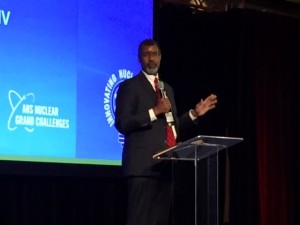
OECD Nuclear Energy Agency Director-General Bill Magwood speaks at the ANS 2017 Annual Meeting. Photo credit: Tari Marshall.
Attendees of the 2017 American Nuclear Society Annual Meeting were fortunate to hear an address by William Magwood, the former NRC Commissioner. Magwood is currently the Director-General of the Nuclear Energy Agency (NEA) of the OECD. He addressed the ANS members on the ANS Grand Challenges developed under the leadership of (now immediate past-President) Andy Klein.